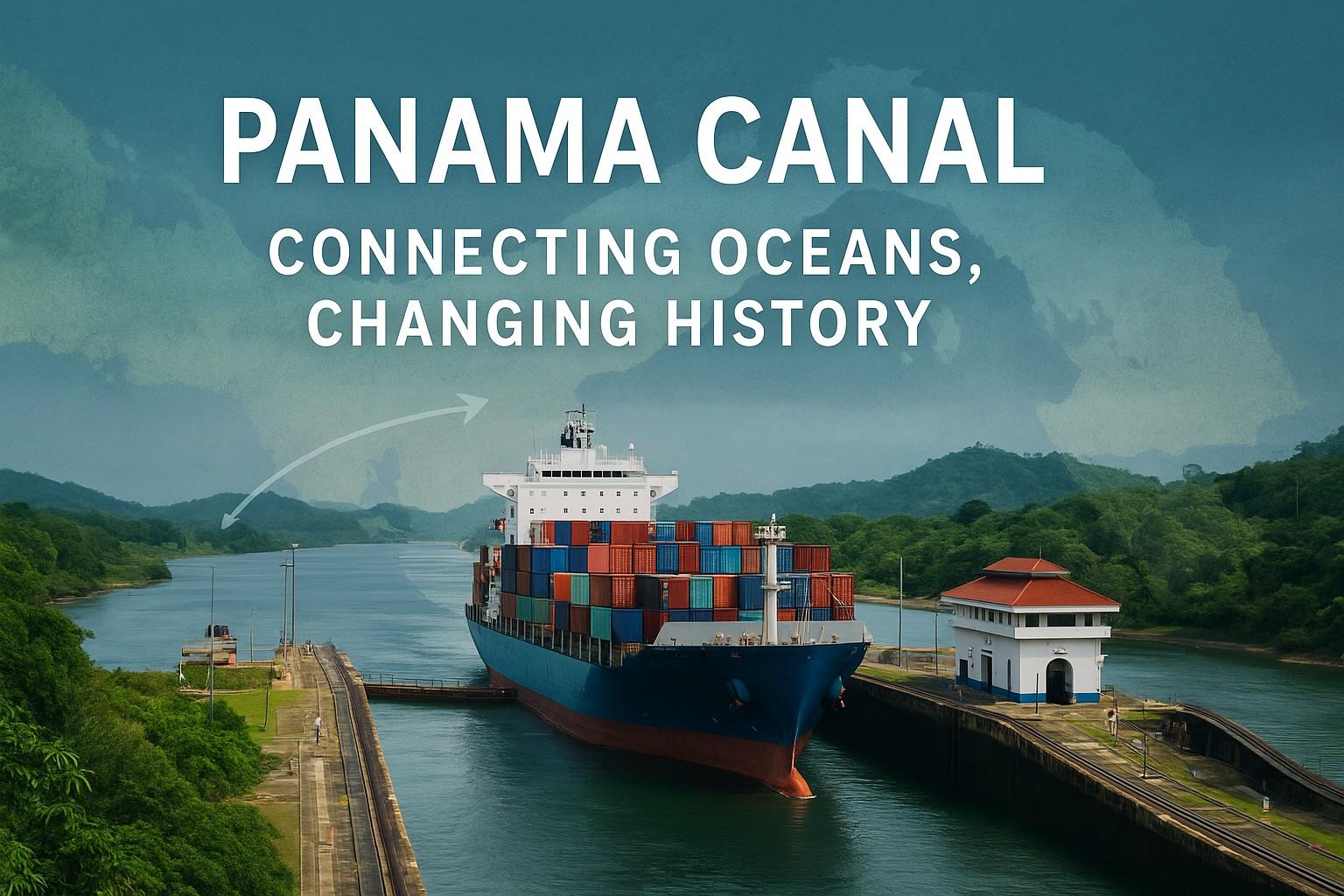The Panama Canal: History, Operation, and Global Importance

A Glimpse of Panama
For an instant, you’d believe it’s Qatar or Miami with their oceanfront skyscrapers. But it’s Panama here, with rainforests, whales, and of course, the infamous Panama Canal.
This is no ordinary canal it’s the waterway which enables ships to travel between the Pacific Ocean and the Atlantic Ocean in hours, as opposed to months traveling around South America.
The Dream and the Struggle
The canal through Panama was first attempted by a French company in 1881 the same company that had constructed the Suez Canal. Their solution was to excavate the entire 82 kilometers of rough, muddy, rainforest land.
But while Egypt’s desert was dry, Panama was a malarial tropical jungle. Yellow fever and malaria killed almost 22,000 workers. Eight years later, the French gave up the project, bankrupt and humiliated in the Panama Scandal.
America Steps In
The United States recognized the strategic importance of the canal. They initially thought to construct it in Nicaragua but purchased the French concessions and equipment instead.
Panama was then under Greater Colombia. When Colombia withdrew from a treaty, the US sponsored Panama’s struggle for independence in 1903. Later, Panama entered into an agreement with the US and construction of the canal started in 1904.
The New Plan
American engineers soon figured that a sea-level canal such as the Suez was out of the question. Rather, they planned a system of:
- Locks to lift and lower ships between sea level and the canal’s middle lake.
- Gatun Lake a gigantic artificial lake, formed by damming the Chagres River, at the time the world’s largest artificial lake.
- These dams, lakes, and locks together made the canal possible.
- At last, in 1914, the Panama Canal opened. It was greeted around the world as one of the greatest engineering feats of the 20th century.
How the Canal Operates
- The Panama Canal crossing only takes 8 to 10 hours.
- Vessels enter from the Atlantic or Pacific side.
- They are directed into locks, where levels are adjusted up or down using Gatun Lake freshwater.
- Tugboats assist with navigation of the tight passages.
- Vessels travel over Gatun Lake and then down through additional locks to the second ocean.
- Every ship transit employs more than 50 million gallons of freshwater all rainwater that has been captured in Gatun Lake.
Why the Canal is Important
Prior to the canal, vessels crossing from Los Angeles to New York had to go around Argentina, a trip that took months. With the canal, the same journey could be made in days.
The canal provided the United States with an international naval supremacy, enabling its warships to travel rapidly between oceans. It also revolutionized international trade, saving billions of dollars in shipping costs.
Difficulties Nowadays
Climate change has introduced a new difficulty. Droughts in Panama translate into less rainwater for Gatun Lake, compelling authorities to restrict the number of ships as well as how much cargo they transport.
Nevertheless, the canal is still one of the most significant waterways in the globe only second to the Suez Canal.
Beyond the Canal
There is more to Panama than its canal. The same waters harbor migrating whales from Antarctica, and its rainforests are still some of the most biodiverse places on Earth.
A trip to the canal allows you to witness colossal cargo vessels rising and descending in the locks, a live display of human innovation. Statues honor the thousands of laborers who constructed it, a reminder of what was paid for this feat of engineering.
Conclusion
The Panama Canal is more than a waterway. It’s a tale of ambition, sacrifice, and genius. From French defeat to American triumph, from rainforest to world trade routes, this canal is evidence of what man can do.
It stands, more than a century on, a wonder of the modern age.


